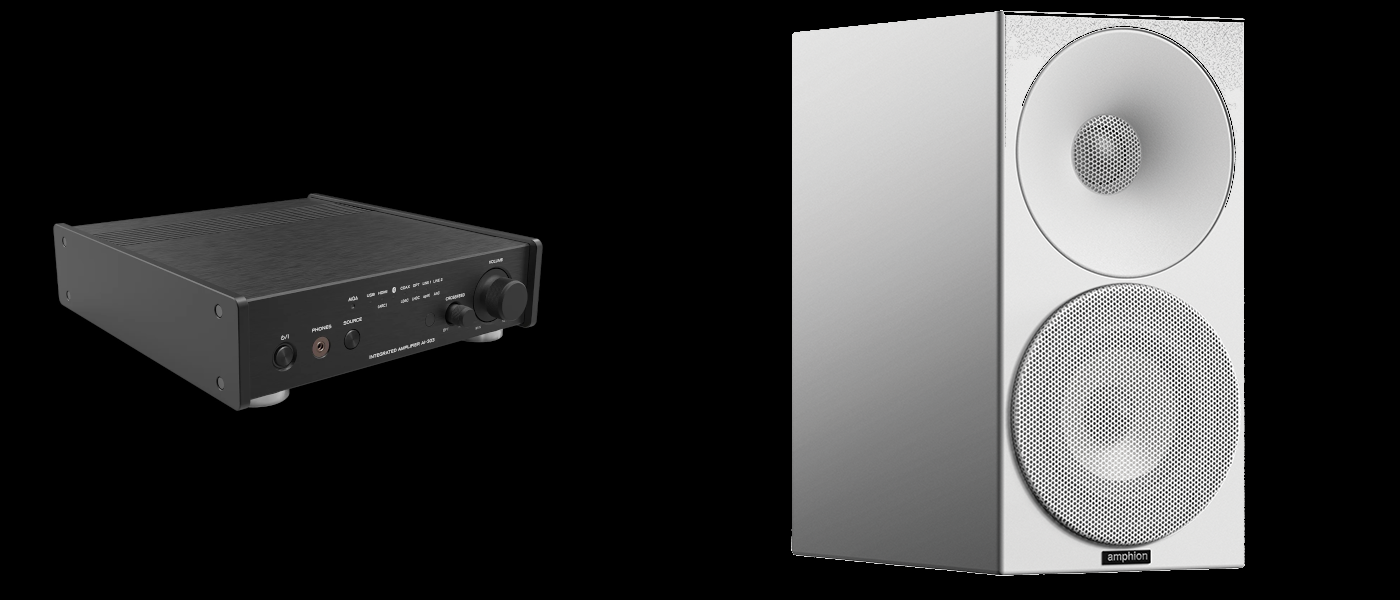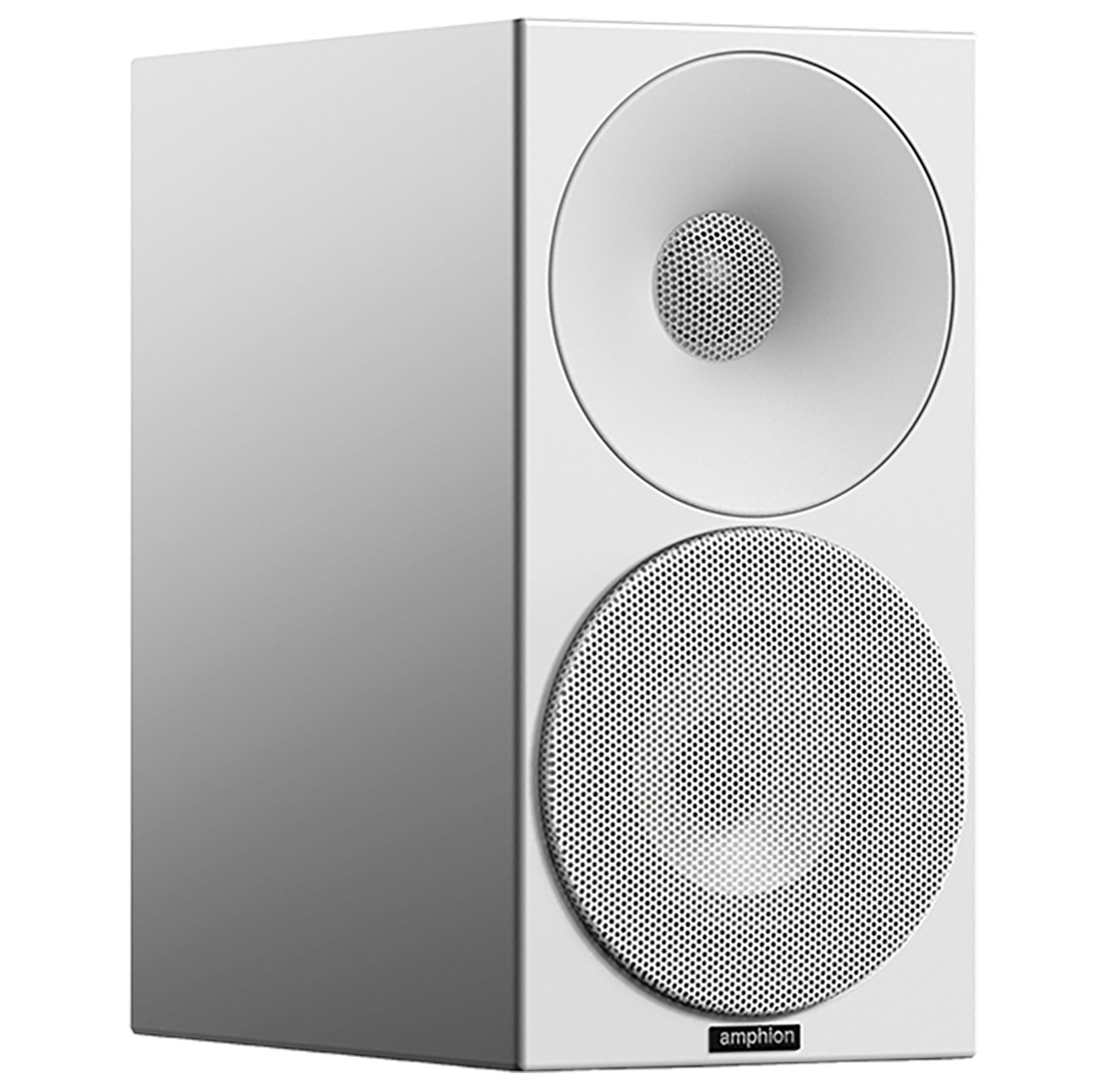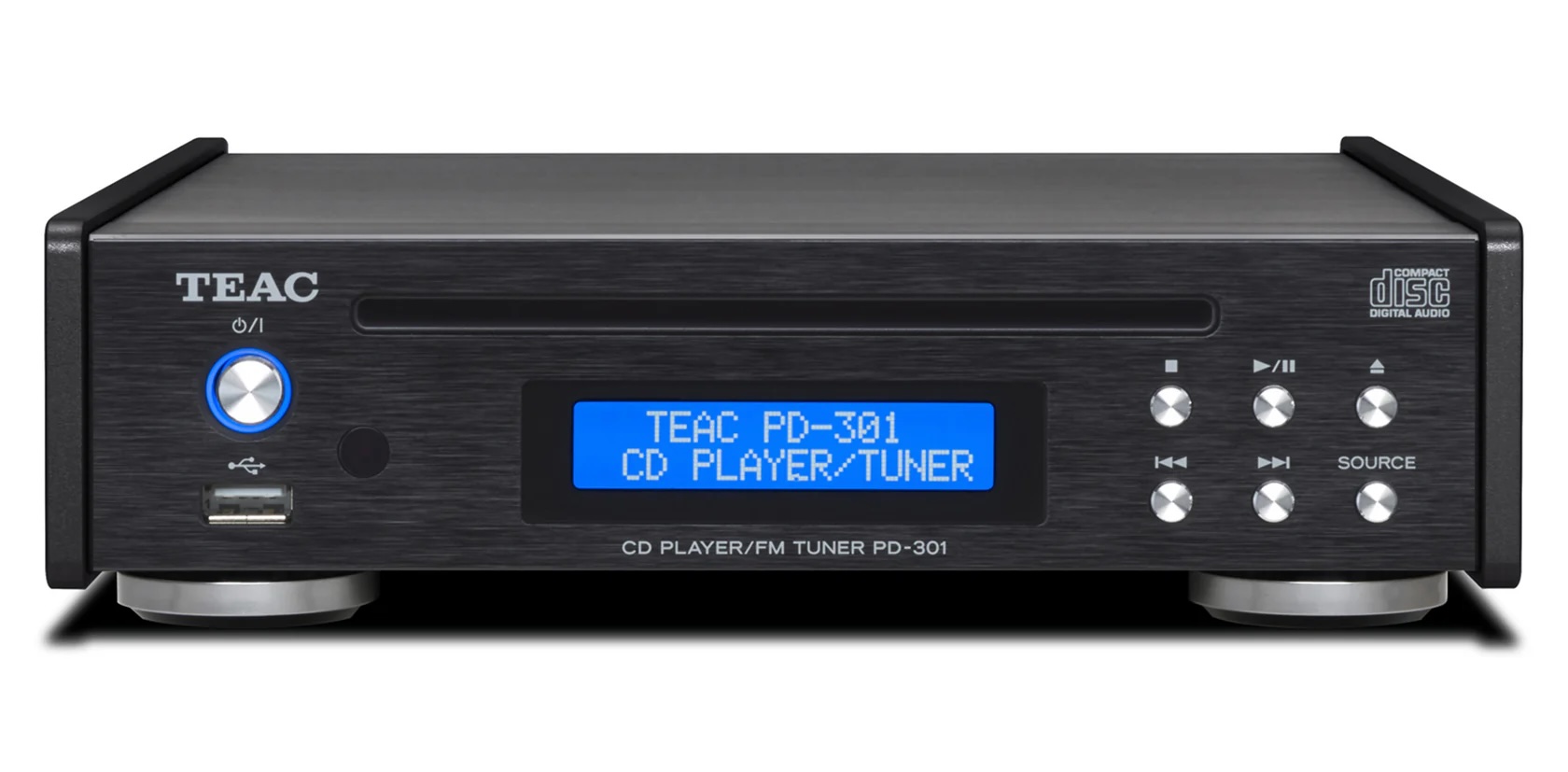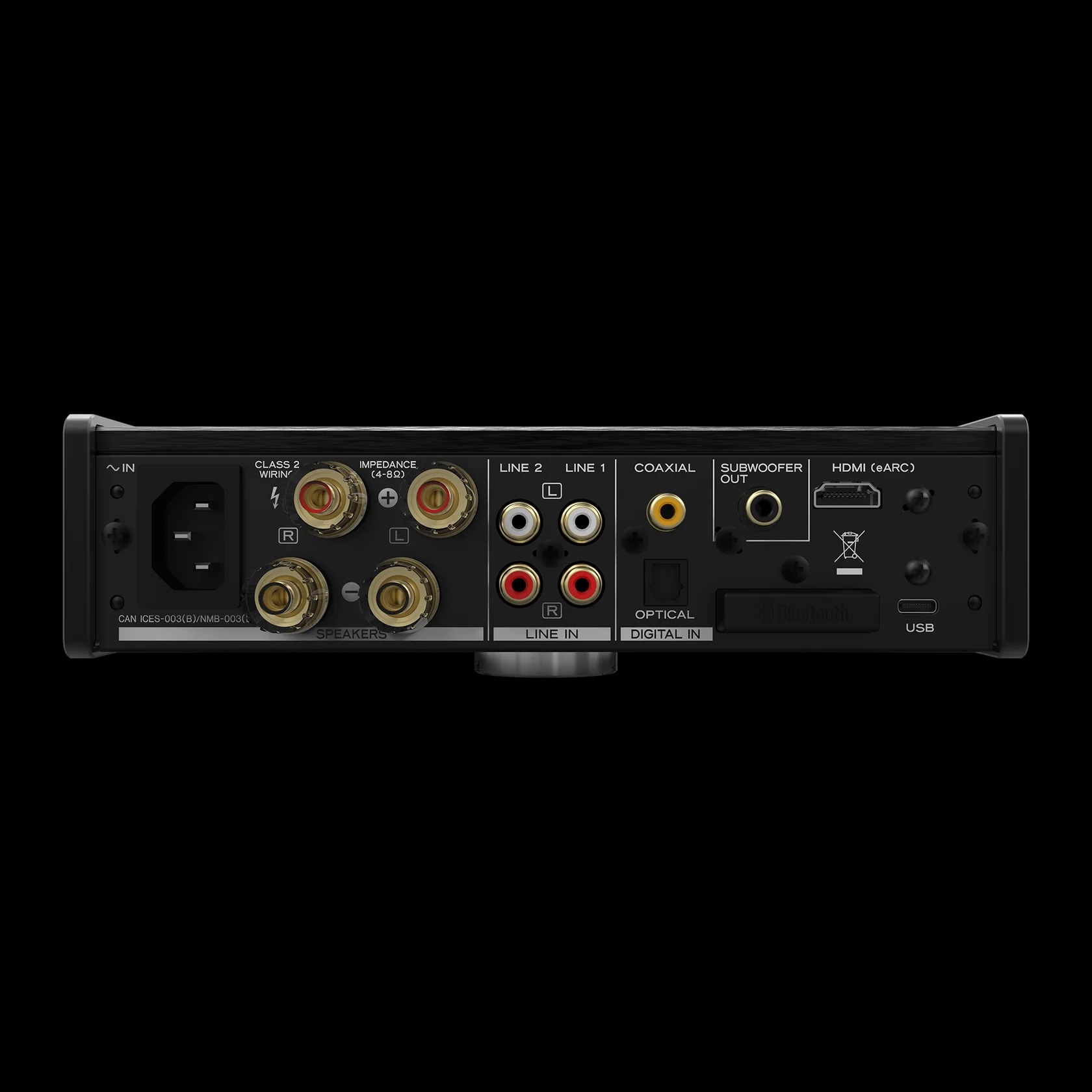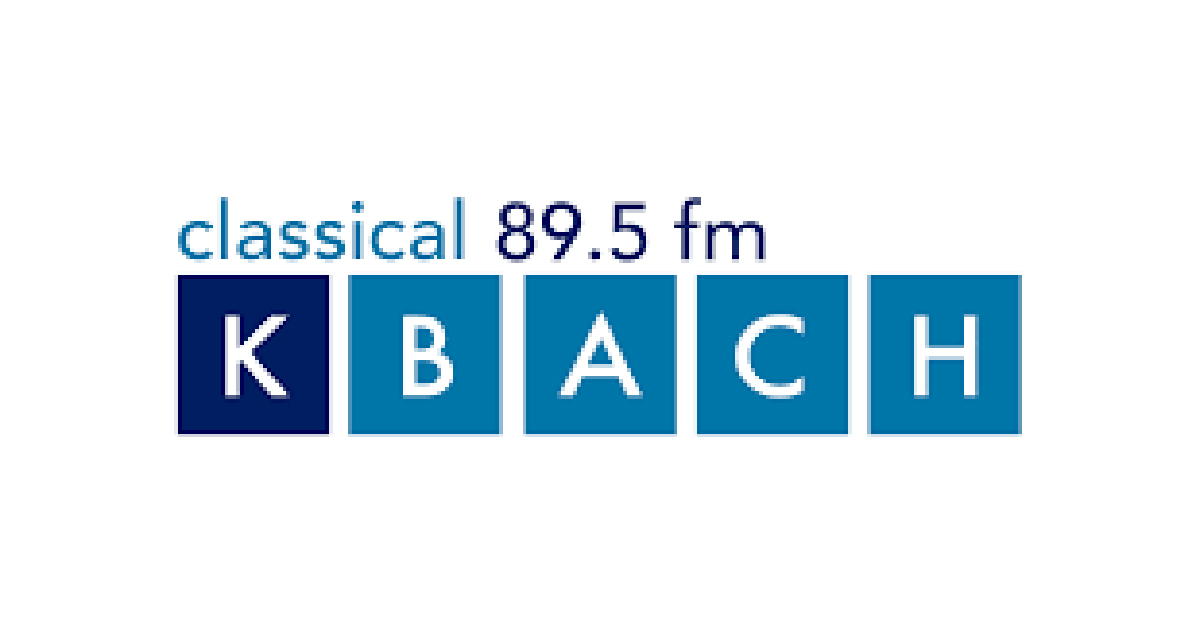The Amphion Argon 0 paired with the TEAC AI-303 integrated amplifier and PD-301-X CD player and tuner bring back that nostalgia in a modern, high-performance way that’s perfect for an office or bedroom stereo system.
If you want a compact, attractive music system but don’t want to stoop to a “smart speaker” and all the sonic compromises therein, then this system is right up your alley.
Amphion Argon 0 Bookshelf Loudspeakers with TEAC AI-303 Integrated Amplifier/DAC and PD-301-X CD Player and FM Radio
- Compact size with handsome looks.
- Excellent build quality, especially in the Argon 0 speakers.
- Lots of color options for the speakers.
- Lots of digital input formats available, with a high-performance Sabre-based DAC.
- Plenty of power in a very compact package.
I miss bookshelf stereo systems. They remind me of being in high school in my room with my new Yamaha bookshelf stereo back in the early 90s. That little “personal” stereo is one of the things that got me into this hobby. And they still have use today. If you have a private office at work, a small system based on bookshelf loudspeakers you listen to in the near field can be far more satisfying than headphones should your neighbors be far enough away not to be bothered. It’s also a great option for a bedroom, den, or other location in your home where you want sound that is better than what you can get with some smart speakers but don’t want the complexity of a full system. There aren’t many quality options left in that genre, but I review one here today. I had the opportunity to audition Amphion’s Argon 0 bookshelf speakers with some mini components from TEAC: their AI-303 integrated amplifier and DAC, and their matching PD-301-X CD player and FM radio. At a combined MSRP of $2,910, this is a luxury item, but it does deliver on what it aims to deliver: great near-field sound in a compact, stylish package.
Type:
Two-way, vented
Tweeter:
1” titanium dome
Mid / woofer:
4½” aluminum driver
Crossover point:
1600 Hz
Impedance:
8 Ω
Sensitivity:
86 dB
Frequency response:
50 – 25.000 Hz -6dB
Power recommendation:
25 – 120 W
Measurements (H x W x D):
10.2” x 5.2” x 8.7” (259 x 132 x 220 mm)
Weight:
11lb (5 kg)
MSRP:
$1,560
Company:
SECRETS Tags:
amphion, argon, bookshelf, speaker
Amplifier Rated output:
25W + 25W (LINE IN, 1kHz, 8Ω, THD 0.03%, JEITA) 50W + 50W (LINE IN, 1kHz, 4Ω, THD 0.03%, JEITA)
Compatible speaker impedance:
4Ω to 8Ω
Frequency Response:
2 to 70kHz (LINE IN, –5dB, JEITA)
THD:
0.008% (LINE IN, 20Hz to 20kHz, 4Ω, 6.25W, JEITA) 0.004% (LINE IN, 1kHz, 4Ω, 6.25W, JEITA)
S/N ratio:
100dB (LINE IN, JEITA)
Digital Audio Inputs:
Coaxial LPCM 32k / 44.1k / 48k / 88.2k / 96k / 176.4k / 192kHz, 16 / 24bit, DSD 2.8MHz (in 176.4kHz/24bit DoP format)
Optical LPCM 32k / 44.1k / 48k / 88.2k / 96k / 176.4k / 192kHz, 16 / 24bit, DSD 2.8MHz (in 176.4kHz/24bit DoP format)
USB-C 44.1k / 48k / 88.2k / 96k / 176.4k / 192k / 352.8k / 384kHz, 16 / 24 / 32bit, DSD 2.8M / 5.6M / 11.2MHz
HDMI ARC/eARC 192kHz, 24bit (PCM)
Line inputs:
2x RCA, 10kΩ input impedance
Bluetooth 4.2:
Class2 (range: approx. 10m / 33ft.), A2DP, AVRCP, supports LDAC, LHDC, Qualcomm® aptX™ HD audio, Qualcomm® aptX™ audio, AAC, SBC with SCMS-T A2DP content protection
Headphone output:
3.5mm 4-pole Stereo mini × 1, 220mW + 220mW (LINE IN, 32Ω, 1kHz, THD 1%, JEITA), THD 0.006 % (LINE IN, 32Ω, 1kHz, 50mW, JEITA)
Power consumption:
63W max
Overall dimensions (W × H × D):
8.5” x 2.4” x 10.1” *215 × 61 × 257 mm)
Weight:
5.1 lb (2.3kg)
MSRP:
$999.99
Supported media:
CD-DA, CD-ROM, CD-R, CD-RW (8cm CDs not supported). Supports CD-DA format on CD-RW
Supported USB devices:
USB Mass Storage device class, USB2.0 (FULL-SPEED), USB1.0 (HIGH-SPEED), USB3.0 compatible, FAT16, FAT32 file systems
USB Bus power:
DC 5V, max 500mA
Tuner section:
FM only, 76.0 to 108.9MHz
Audio outputs:
Line RCA Pin × 1 pair, Optical digital audio Toslink
Power consumption:
8W
Weight:
4.6 lbs. (2.1kg)
Dimensions (W × H × D):
8.5″ x 2.4″ x 9.4″ (215 x 61 x 238 mm)
MSRP:
$349.99
Company:
SECRETS Tags:
teac, integrated amp, cd, radio, compact, system
Secrets Sponsor
The TEAC/Amphion mini system is a very stylish, compact addition to your desk, bedroom, or den. Starting with the speakers, the Amphion Argon 0s are exceptionally well made. If anything, they’re overkill for this application. They would be equally well suited on stands in a proper listening room application, but they’re about the best compact speakers you could get your hands on for actual “bookshelf” operation. They have a very clean, Scandinavian look, with a smooth, seamless cabinet and a no-grille design. Both the 1” titanium dome tweeter and the 4.5” aluminum woofer have built-in color-matching perforated metal covers, with the tweeter set into a flared horn-like waveguide. Mine came in the standard white finish, but they’re available in Black with contrasting white driver grilles and waveguide, all black or for an additional cost, walnut veneer with black drivers, or in white with eight choices of colored perforated driver covers. There’s a rear-mounted port, metal threaded inserts for wall mounting with an Amphion wall mount bracket, and 5-way banana plug compatible binding posts of “normal” size. Given the small size of this speaker, the binding posts are not designed for garden hose sized audiophile speaker cables. They’re rated at an easy-to-drive 8 Ohms, with a 50 Hz-25 kHz -6 dB frequency response rating and 86 dB/W/m sensitivity. Amphion recommends a minimum of 25W of amplifier power. As with any small bookshelf speaker, you do give up the low end. If you wanted, you could add a separate powered subwoofer, but I really didn’t miss the bass in the application where I used this system. The fit and finish of these speakers are exceptional, with a flawless cabinet finish, truly seamless construction, and a very solid feel. They ain’t cheap at $1560, but you get what you pay for.
The TEAC mini components paired with the speakers were also handsome and well-built but in a Japanese HiFi way. They reminded me of the modern equivalent of the 1980s and 1990s Denon and Nakamichi mini component systems of my youth but with modern high-quality sound and features. The AI-303 integrated amplifier delivers the needed 25W for the Amphions in a very compact package using a class-D digital amplifier section that delivers 25Wpc into 8 ohms and 50 Wpc into 4 ohms (for real, no funny business), combined with a Sabre-based 32-bit DAC that can decode up to 32-bit 384 kHz PCM and 11.2 MHz DSD over the USB-C input, with MQA decoding standard. Optical, coax, and HDMI digital inputs are somewhat more limited in their capabilities but still can do both formats. The USB-C input requires a TEAC driver for Windows PCs. Macs benefit from an asynchronous transfer mode with the TEAC driver. The AI-303 allows you to select between two digital filters (FIR and a TEAC RDOT filter), and several upconversion modes available only with the RDOT filter. I used a Raspberry Pi 5 running open-source music server software. I used the review of this system as an excuse to set up said Pi 5-based streamer to use with DACs that do not have streaming capabilities. I set mine up using simple ALSA audio output, MPD capability to play my NAS music library (and to stream Qobuz through my mconnect iPhone app as I do with my Chord Poly), and a few other features. I based my setup on Mathieu Réquillart’s very nice set of posts on Medium on how to set it up (https://mathieu-requillart.medium.com/my-ultimate-guide-to-the-raspberry-pi-audio-server-i-wanted-introduction-650020d135e1), although I simplified my setup. I decided not to use PulseAudio because I didn’t need or want the mixer features that it provides. It’s too easy to inadvertently resample and otherwise mess with the audio stream. ALSA is so simple it can’t do any of that stuff, so you’re sure you’ll get the original stream unmolested. Since I had no desire for Bluetooth (the AI-303 already has it), PulseAudio’s complexity was unneeded. Note, that I like to do this sort of thing for fun. I’ve been using Linux computers since the late 1990s, and poking around inside the guts of a UNIX OS doesn’t scare me one bit. And I’m cheap. So, the idea of a $100 music streamer based on a Raspberry Pi and my own setup work was attractive to me. But maybe not for you. It would be nice if the AI-303 included the same streamer architecture as TEAC’s own NT-505-X. But it doesn’t. It just has the DAC. And if you pair it with the NT-505-X, you end up buying the DAC and preamp twice. Especially for use in a bedroom, an all-in-one solution including streaming would be great. But, if you set this system up on a desk where there’s already a computer you can use as a player, it’s perfect. One weird thing I found with my streamer: when turning on the AI-303, I had to switch away from the USB input to something else and back again for the computer to recognize the AI-303 was there. This has something to do with the sleep mode of the AI-303, and maybe something weird in my config of the Raspberry Pi. You’ll probably never see it. The AI-303 also has a relatively high- performance headphone amp with continuously adjustable crossfeed, but I did not test that feature.
My test system also came with the TEAC PD-301-X CD player and tuner. The CD player is a bit anachronistic, but if you still like playing physical disks this matching player will do the job and has a digital output that feeds the AI-303 DAC directly. It also has an FM-only tuner so you can listen to radio, which is very nice for an office or bedroom system. I didn’t play any CDs. Mine are all packed away in the garage having been ripped to Apple Lossless format on my NAS long ago. But I did listen to NPR often with the tuner. It’s a simple unit with analog RCA and digital coax and Toslink outputs on the back, and a 75 Ohm F connector for the antenna. It’s powered by a 12V wall wart, whereas the AI-303 has an internal power supply with an IEC jack on the back for the power cord. Both units come with small, credit card-sized remotes. The only goofiness in usability was with the remotes. The AI-303 remote will turn on the amp but not the CD player. The CD player remote can power both. But it can’t operate all the features of the amp. So, a few times I ended up turning one box on, and then tried to turn on the other and turned off the first in the process. One remote that could do everything for both units would be great. Again, if they’re on your desk within arm’s reach it won’t matter.
I set up the TEAC/Amphion system in our bedroom on a low dresser using the aforementioned Raspberry Pi-based streamer as a source connected to the USB3 input of the AI-303. The speakers were placed at the edges of the dresser, giving them about 6’ of separation. It was a real luxury to lie in bed and be serenaded by a system of this quality, and the small size and handsome looks of the electronics and speaker kept the family life happy. I listened to both FM radio (usually our local NPR stations KJZZ, which unfortunately no longer plays jazz, and KBAQ, our classical station), and Qobuz streaming through the Raspberry Pi using the mconnect iPhone app. Throughout my listening I found the sound to be clean, relaxing, and balanced, with the expected lack of low end from the bookshelf speakers.
Both because of the listening venue and the system itself, I found myself primarily listening to jazz with Qobuz and classical music from KBAQ. The FM radio performance was typically good enough that I would only be reminded I was listening to radio when an announcer came on the air. The idea of listening to good old FM radio on a bookshelf system in the bedroom was also nostalgic. I live in central Phoenix, AZ with the KBAQ 30kW transmitter only about 10 miles south, so reception even with the included wire antenna was no issue. The selectivity and noise performance of the tuner were very good at least in these pretty ideal conditions. I had no audible reception issues that ever reminded me I was listening to analog radio broadcasts.
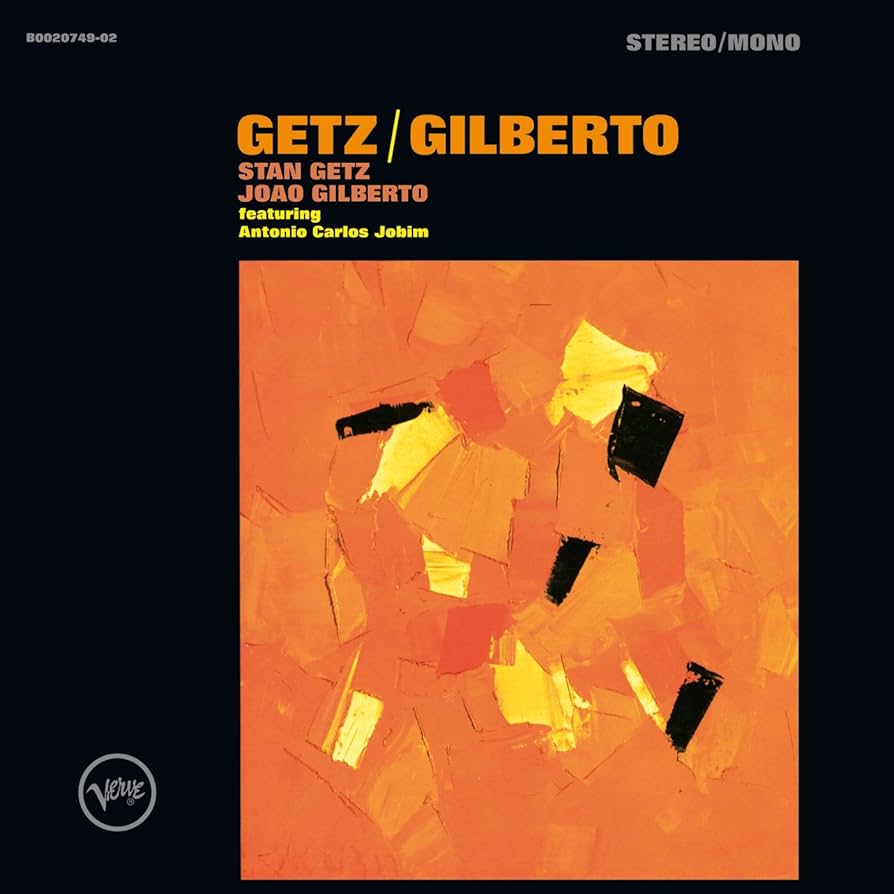
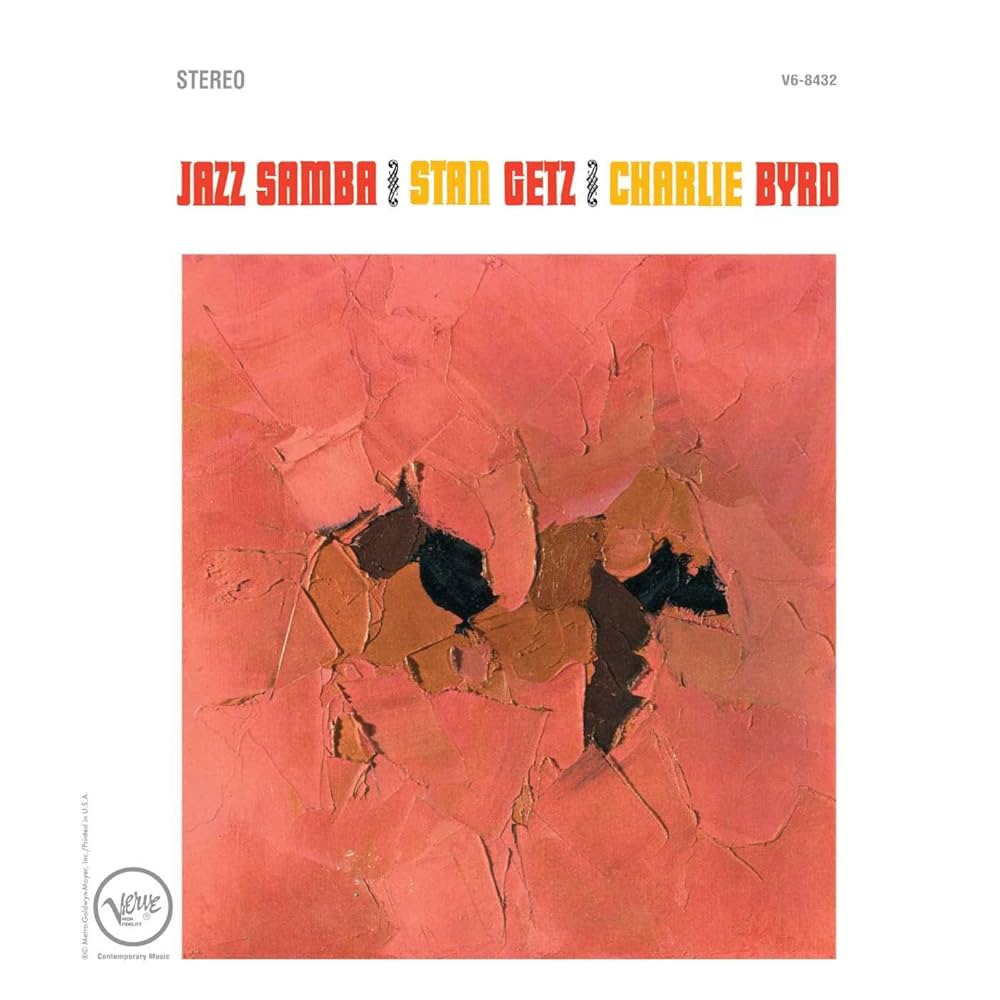
Stan Getz and João Gilberto featuring Antonio Carlos Jobim, “Getz/Gilberto”
Stan Getz and Charlie Byrd, “Jazz Samba”
With streaming, I only had the one usability issue I mentioned before. Every time I turned on the system, I had to move away from the USB-C input to something else and back again to “wake up” the USB connection. This was an issue on the computer side and not something with the AI-303. Once that happened, I could happily stream everything that Qobuz could play, including 24-bit 192 kHz content, and play content from my NAS music library. This consisted mainly of Apple Lossless and FLAC recordings, plus my digitized SACD collection saved as DoP FLAC files. The AI-303 handled them all with no problems and provided the sound I expected from a Sabre-based DAC. The sound was very clean, clear, and detailed with very little sonic character coming from the DAC but had a little bit of dynamic flatness that I typically hear with Sabre DAC solutions. All in all, the performance was very good. The amp section had the power to drive the Amphion speakers without any problems to listening levels plenty loud enough for bedroom or office applications. They’re not going to be filling a stadium, though. The fairly low power output of the amp and the small size of the speakers also limited dynamic performance somewhat. Listening to rock or electronic music worked, but you could tell you were missing the bottom end and that the leading edges of dynamic contrasts were rounded off. It just wasn’t as exciting as on the big system. But with jazz, especially small groups, more laid-back pieces, the sound was great. I enjoyed listening to Stan Getz’s Jazz Samba and Jazz Samba Encore, and Getz/Gilberto 1 and 2. Some of the “bigger” pieces on Big Band Bossa Nova started to reveal the dynamic limitations of the small system more directly but overall, I was very happy. We also have some smart speakers around the house for casual listening. They’re good ones, but I will let them remain nameless. This system is leaps and bounds better. Like the difference between mass-market stuff from the big box store playing MP3s and a good high- end system playing good source material different. If you really wanted to, you could pair the system with a small, powered subwoofer to get back some of that bottom end and dynamic impact. If I wanted to listen to more rock music on the system, I would consider going that route. But I really didn’t miss that bottom octave too much myself.
Secrets Sponsor
If you want a top-quality “bookshelf” component system, you can’t go wrong with the Amphion Argon 0 and TEAC AI-303 / PD-301-X combo. It’s not cheap, but you get what you pay for.
- Handsome looks and very good build quality.
- Compact form factor at home on a desk in a near field setup or in a bedroom or den.
- Very flexible digital input that decodes just about everything.
- Excellent sound quality, particularly with jazz and classical music.
- Streaming capability built into the AI-303.
- A single remote that controls all functions for the whole TEAC system.
The Amphion Argon 0s, paired with the TEAC AI-303 and PD-303-X did everything I expected of them. They performed great as a high-quality “secondary” music system in my bedroom. Their performance walks all over any sort of “smart speaker” you could use while remaining compact and handsome in a living space. This would also make an ideal desktop near-field listening setup for those with a private enough office. Neither the speakers nor the electronics are cheap, but they deliver quality that’s in line with their cost. Yes, it’s a luxury setup. But you’ll get plenty of enjoyment out of it that will justify that expense.



